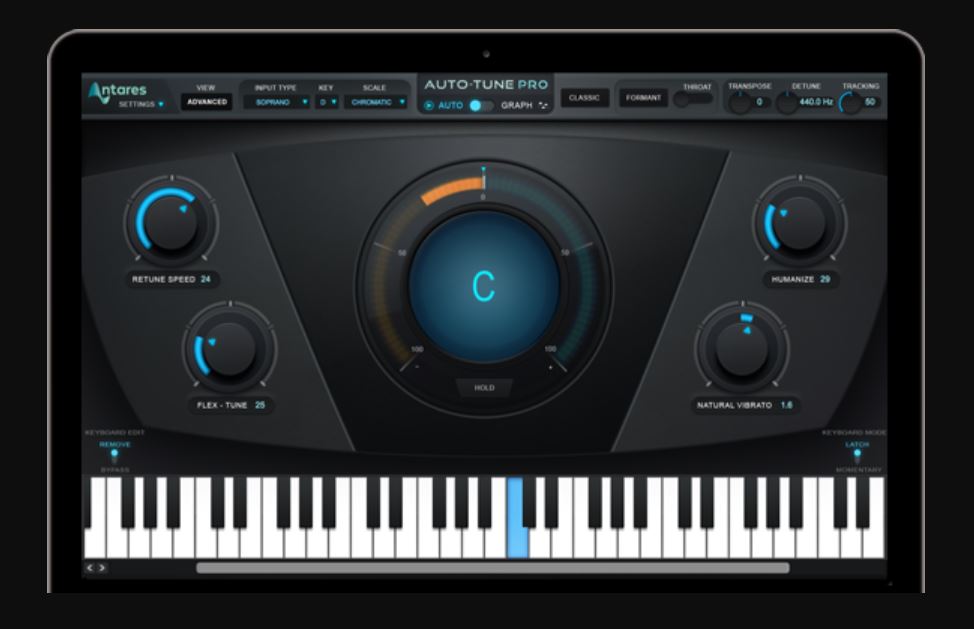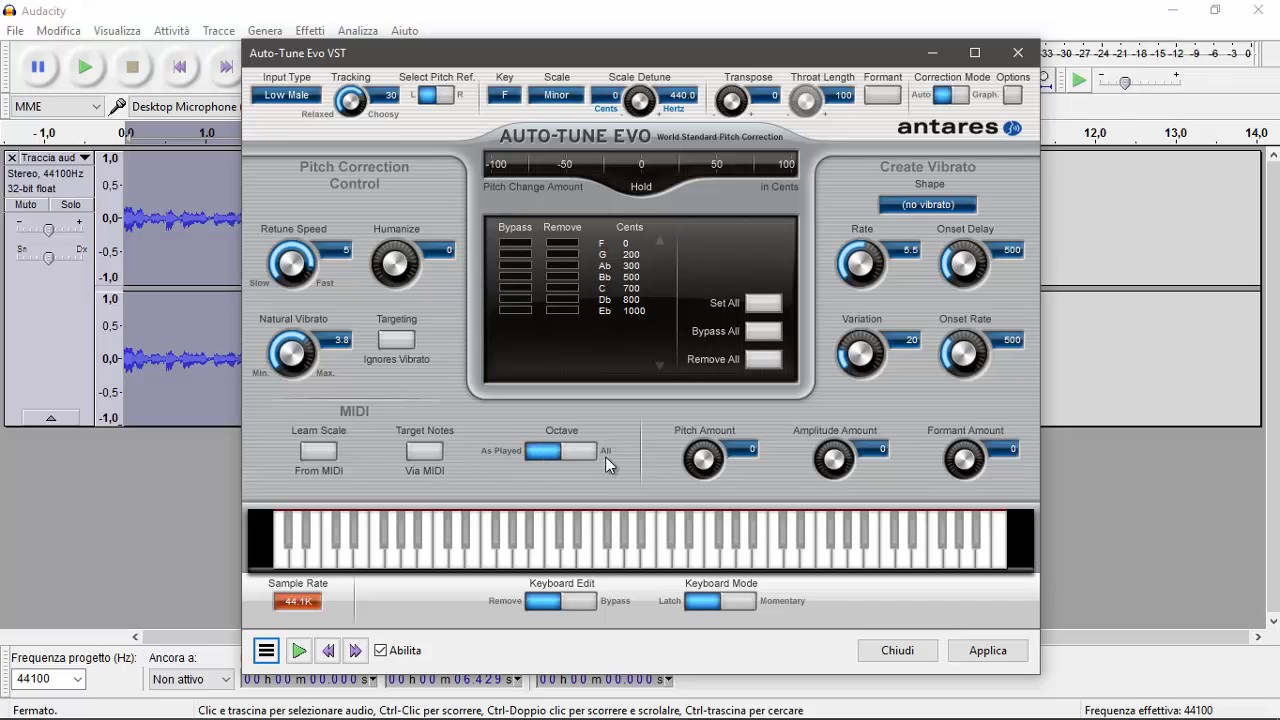
If you choose a key and scale from the list, you’ll still want to adjust which notes are available as targets for tuning on the keyboard. Sometimes, instead of a key they’ll ask you for the root note of your scale, which would be G if using G Minor or G Major. You can manually select a key (like G Minor) and a scale (Melodic minor scale), or you can punch it in manually on the provided keyboard. I define each setting and also provide some suggested starting points for the three levels of pitch correction mentioned above. If you aren’t familiar with the settings at all, please scroll down to the next main section of the article called Autotune Settings. You’ll be able to figure out what’s what, since I give several names for each parameter you can adjust. Though I’ll show you Logic Pro’s default plugin, I’m going to use terminology that’s more likely to appear in all of the plugins.

They all work the same but look different.
AUTO TUNE PRO
In this case I’ll be showing you the Logic Pro Pitch Correction plugin. What I can’t assume is which plugin you’ll be using.

AUTO TUNE HOW TO
I have to assume you know how to use your digital audio workstation software and how to add a plugin to a track in the multitrack.

1) Apply the Plugin to the Track & Familiarize Yourself With It
AUTO TUNE FREE
It also needs to be free of reverb, delay, and other audio effects. Note: Any vocal recording or instrument you want to use pitch correction on must be a mono track. Only after the absolute best performance has been pieced together from many takes should you fix the final errors with pitch correction software. This usually means singing the same section of a song dozens of times and creating a “best of” composite track. The key to having a transparent and musical use of this plugin is to create as best of a vocal track as possible. In this section I’ll be telling you exactly how to use autotune, but I’ll do it from the perspective of polishing an already great vocal performance. It uses the effect over-dramatically and inspired musicians like T-Pain to make it their signature sound. While disguising off-key pitches by slightly adjusting them to lock on key was the initial intention, Cher changed pop music for every with her 1998 single Believe. Many DAW plugins exist that all have their own names and are referred to as such, but the effect is now commonly and simply called “autotune.” The term Autotune has become synonymous with pitch correction, but it’s actually a trademarked word and tool created by Antares Audio Technologies. It’s also used as a sound effect applies pitch correction so aggressively that it sounds unnatural and synthetic. What is Autotune?Īutotune is an audio signal processor tool originally used to correct off-key pitches in vocal performances (or any other instrument). I’m going to show you how to achieve all three stages, from sounding like a robot, to sounding like a synthesizer, to undetectable perfection. Most pop artists are selected based on their overall marketability (looks, ability to perform, above average vocal talent) as opposed to being chosen based on a supreme skill in singing. The only difference between the second and third stage is how good of a vocalist the artist is.



 0 kommentar(er)
0 kommentar(er)
